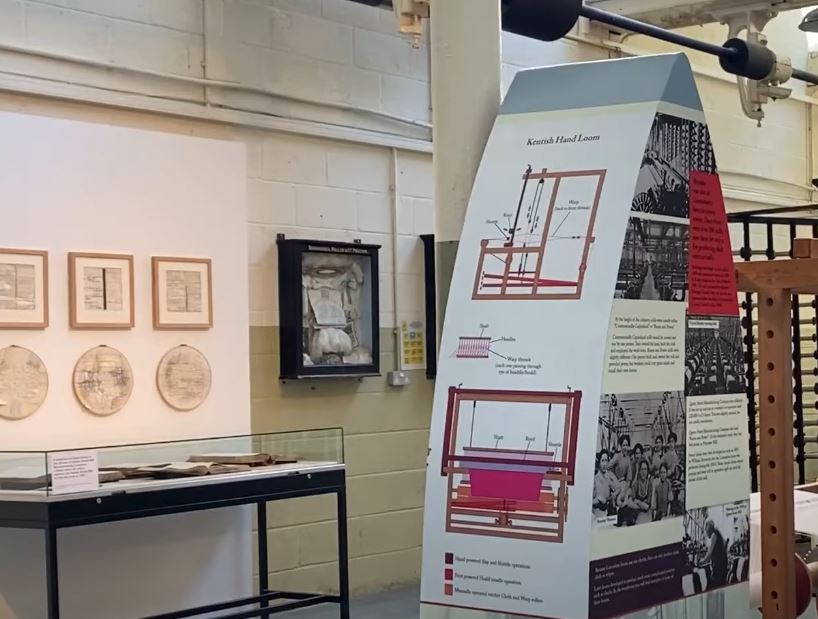
You enter motion, heat, and memory when you enter Queen Street Mill, rather than merely traveling back in time. The museum, which is situated outside of Burnley on the peaceful streets of Harle Syke, offers a tangible, emotional, and industrial experience that has had a particularly strong influence on families, filmmakers, and history buffs. The archive has not been frozen. The legacy is poignant.
This mill, which was constructed in 1894 and opened the following year, was the result of group ambition. Weavers, glazers, and builders were among the common craftsmen who pooled their resources to establish the Queen Street Manufacturing Company. This was a dream that was crafted into steam, steel, and stone, not just a business. The mill established a strong foothold in the hands and hearts of the community by bringing in looms from Pemberton & Co., located in Burnley, and Harling & Todd Ltd.
Queen Street Mill Textile Museum – Essential Facts
| Feature | Detail |
|---|---|
| Name | Queen Street Mill Textile Museum |
| Location | Queen Street, Harle Syke, Burnley, Lancashire, BB10 2HX, UK |
| Established | 1895 |
| Engine | 500 IHP tandem compound steam engine, “Peace” |
| Original Looms | 990 (currently 308 in place) |
| Designation | Grade I listed heritage site |
| Managed by | Lancashire County Museum Service |
| Status | Seasonal opening (April to November), with winter café access |
In its heyday, almost 1,000 Lancashire looms toiled diligently to create calico cloth, a simple but necessary fabric that covered a whole country. A 500 horsepower tandem compound engine called “Peace” was used to power the mill, which ran at a mechanical heartbeat of 68 revolutions per minute. During demonstrations, that engine, which resembles a cathedral organ in design, continues to roar with unadulterated elegance.
Resilience and outstanding advocacy have been necessary for the preservation of this site over the last few decades. Local authorities saved the site after financial difficulties forced its closure in 1982, acknowledging it as a working archive as well as a relic. Today’s visitors frequently experience profound emotion—even overwhelm—when one loom comes into operation. In the past, many mill workers used lip reading to communicate because the loud rhythm of those steel beasts drowned out conversation. This was more than just a job; it was a way of life built on sound, routine, and repetition.
Tensions erupted during the Harle Syke Strike in 1915 as workers sought greater compensation. Transport expenses to Burnley, the management’s defense, didn’t sit well. This was more than just shillings for many. It had to do with justice. The introduction of a wartime bonus helped to defuse the conflict, which had escalated into boycotts, leaflets, and animosity. Interestingly, some of the most outspoken protesters were also shareholders, highlighting the push-pull relationship between ownership and labor.
In 1918, the mill almost burned down, but the engine made it out alive. Despite its magnitude, the destruction ultimately strengthened the bonds within the community. The renamed engine “Peace” served as a symbol of continuity and a monument to the fallen soldiers during reconstruction. Part of the appeal of Queen Street Mill is this type of emotional layering—the machinery connected to times of loss, resiliency, and rebirth.
From a cultural perspective, heritage filmmaking is drawn to the location. While The King’s Speech, starring Colin Firth, used the mill’s unvarnished industrial backdrop to evoke authenticity, BBC’s North and South shot among the looms. Inspired by the ambiance, Firth described it as “a thing of beauty” in the guestbook, a description that appears in almost all visitor reviews.
New lifelines have been provided by government assistance in recent years. The museum obtained more than £800,000 through the Arts Everywhere Fund to repair its northlight roof, a crucial component that safeguards more than 300 original machines. The repair is essentially protective rather than cosmetic. It greatly lowers the chance of losing a functional collection that is unrivaled in the UK by preventing water damage.
In addition to the visual spectacle, visitors are still drawn to the unique opportunity to witness machinery in its original state. The museum doesn’t use glass to conceal its workings. Rather, the experience is remarkably successful in fusing personal storytelling with industrial education through meticulous demonstrations and approachable guides like Janet and Colin. Many of the guides are Burnley locals or former weavers who intertwine technical facts with personal stories.
Incorporating interactive activities like weaving classes and educational kits for schoolchildren has significantly enhanced the museum’s outreach approach. Along with mementos, young people depart with a respect for history that textbooks cannot impart. This direct, tactile, and intimate impact is very effective at generating interest in all age groups.
The mill also facilitates the production of specialty textiles. The museum has partnered with designers from all over the nation to use traditional techniques to weave custom cloth. From Jewish prayer shawls to vintage shirts for the fashion brand Old Town, the mill has developed into an artisanal partner for producers who value tradition over mass production. This innovative intersection of modern application and heritage preservation is becoming more and more popular.
The café has developed into a popular local meeting place and is open even in the winter. It brings coziness to the industrial scene with its filling soups and Weavers’ Picnic Lunches. More impressively, every pound spent here contributes to the museum’s overall mission.
Regarding its wider social function, Queen Street Mill contributes to a growing cultural movement that values sustainable production and handicrafts. Locations such as these provide a much-needed counterbalance as automation and digital acceleration reshape industries. They serve as a visceral reminder that speed and scale used to require a great deal of human labor. And that maybe progress doesn’t always entail letting go of the past.
The museum has expanded well beyond Burnley by forming strategic alliances with tourism boards and arts councils. Walking through Queen Street Mill is an act of connection, regardless of whether you’re a student, filmmaker, or just an inquisitive tourist. Not only can you see history, but you can also feel it whispering through the threads, humming beneath your feet, and ticking in the pistons.
